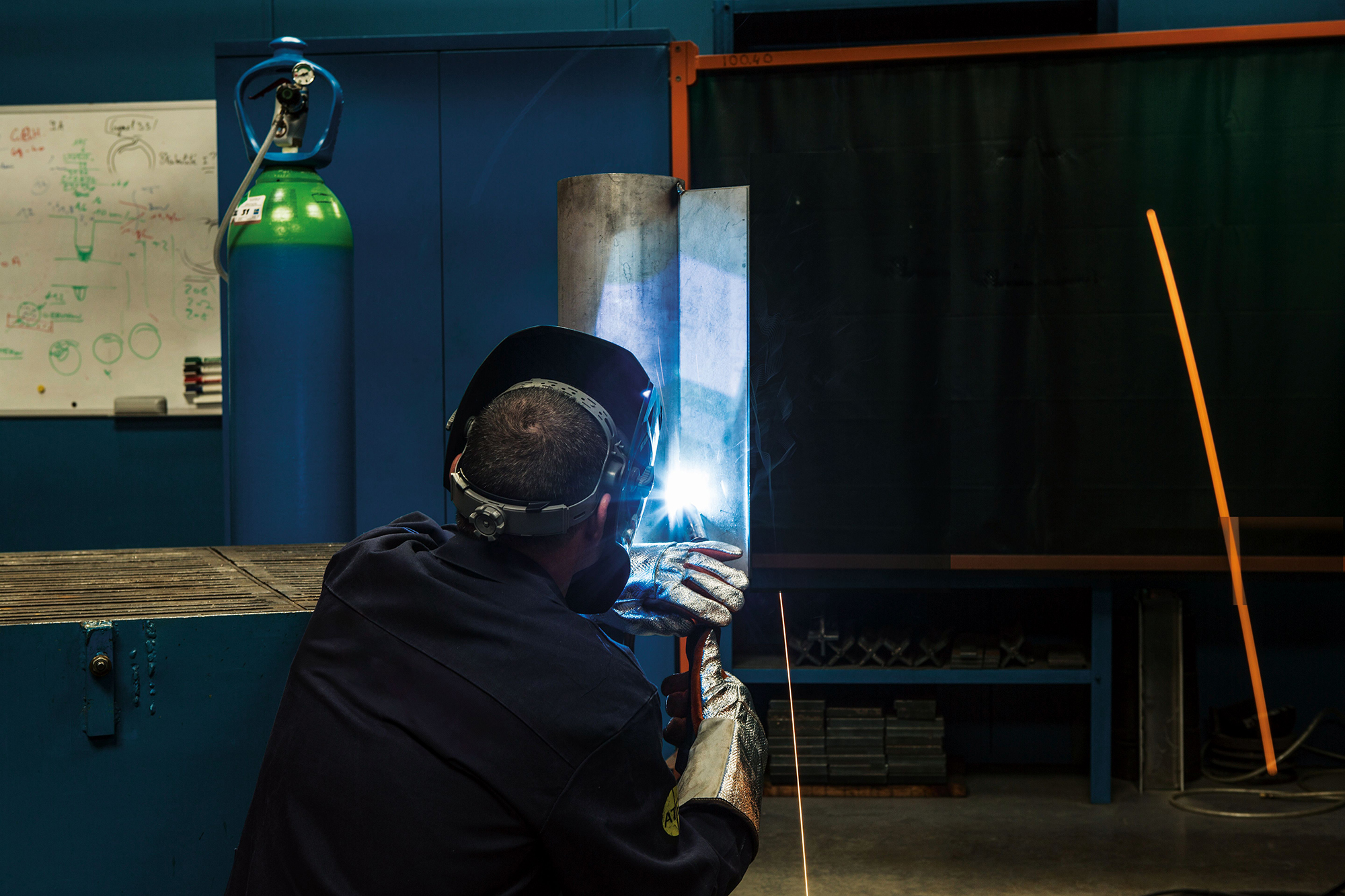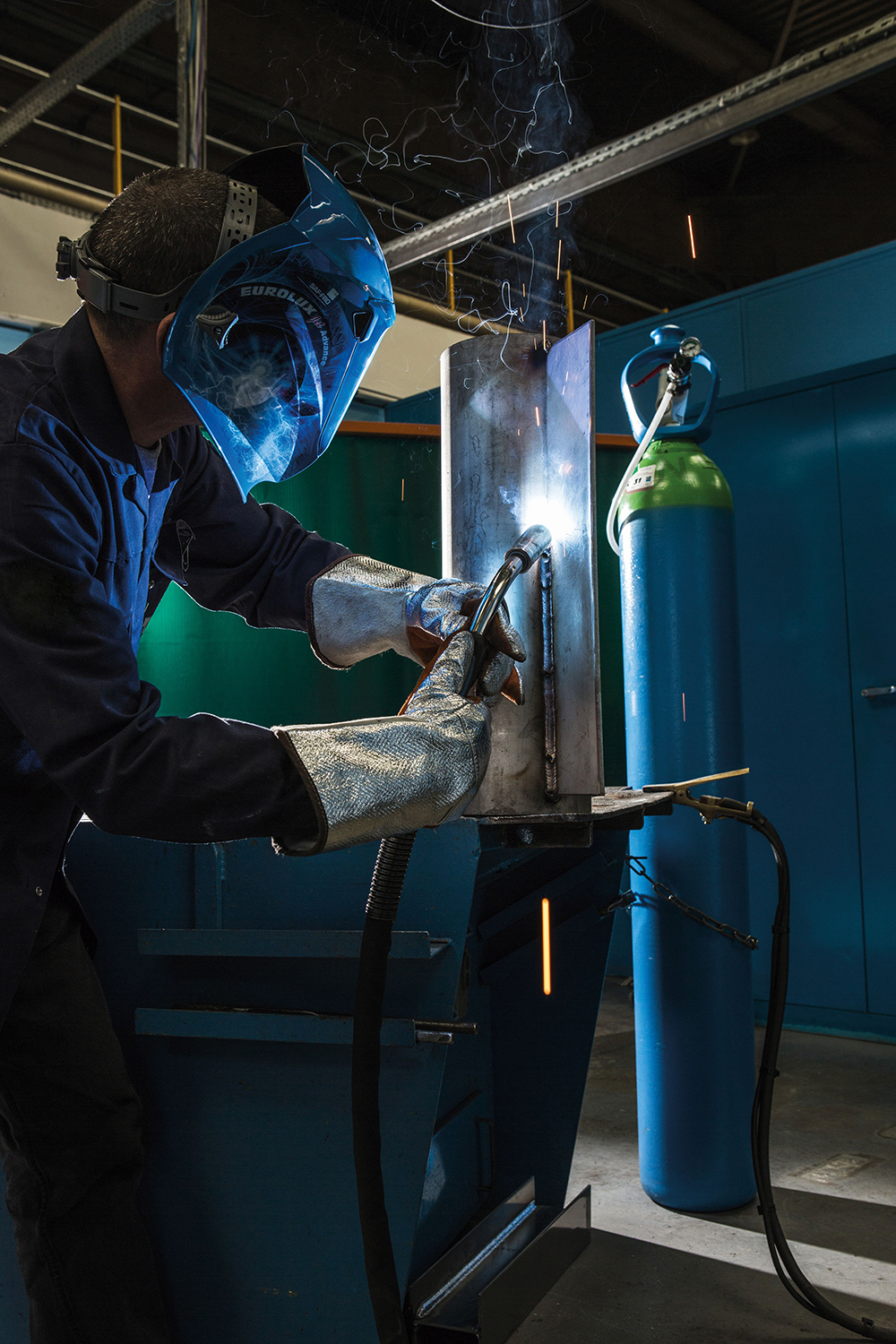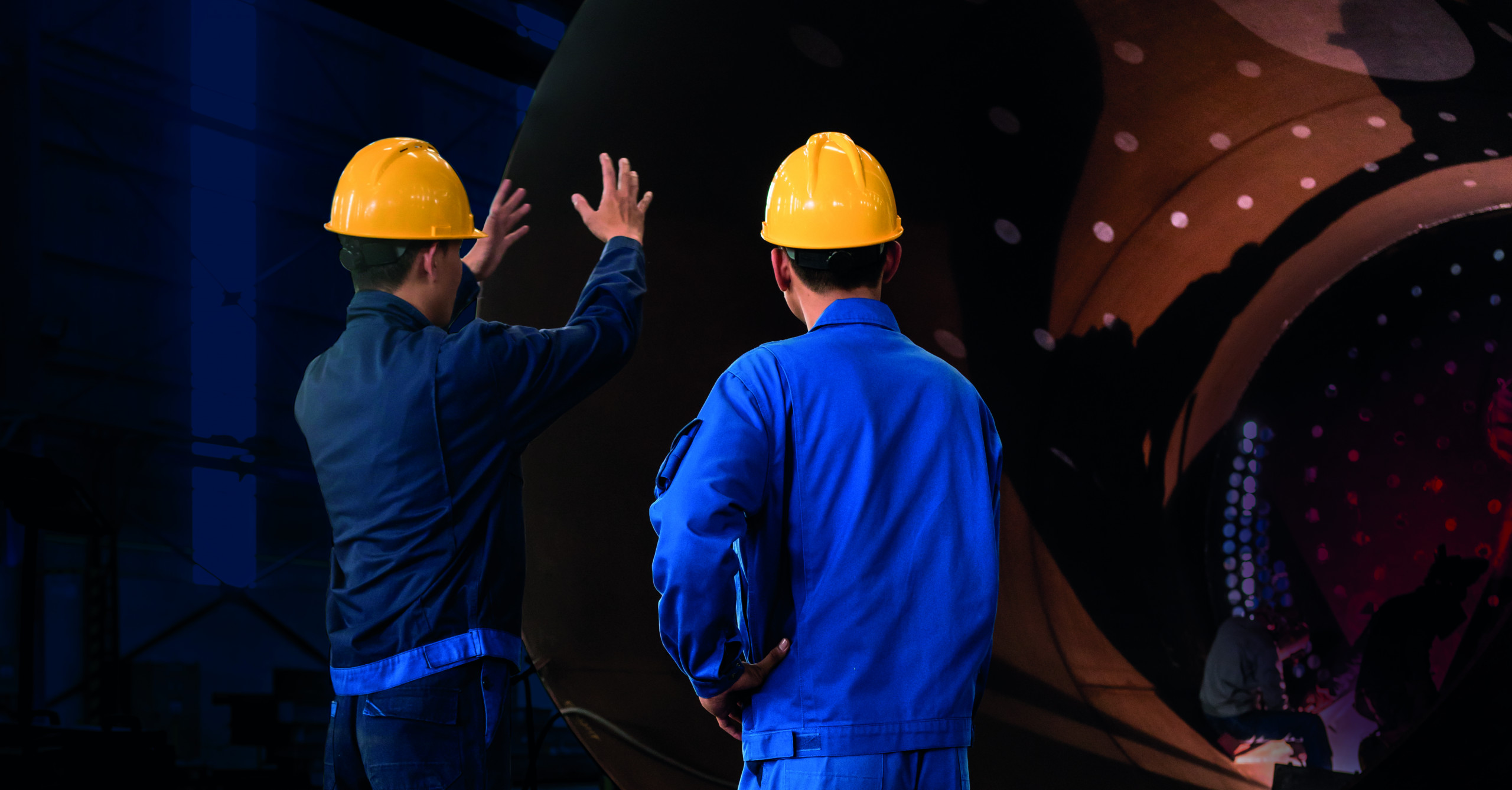
In the wide range of welding applications, efficiency, precision and safety are crucial in order to minimize or completely avoid costly and time-consuming rework. The quality of the weld seam and the integrity of the welded component depend to a large extent on the correct application of the welding parameters.
The variety of materials increases the complexity of welding. Each material requires specific shielding gases to protect the weld pool from oxygen, nitrogen and humidity, which can lead to porosity and embrittlement.
Highly developed stainless steels such as duplex, super duplex and fully austenitic steels are used in the chemical and food sectors in particular. They are characterized by excellent mechanical properties and corrosion resistance. Nitrogen as an alloying element in these steels improves strength and corrosion resistance.
Therefore, when welding these stainless steels, a precise addition of nitrogen to the shielding gas is required in order to maintain the material properties and prevent denitrification. An incorrect shielding gas composition can reduce the nitrogen concentration in the weld seam and negatively affect the properties. The exact coordination of the shielding gas is crucial for the quality and durability of welded constructions in these demanding industries.
Challenges in MAG welding of high-alloy steels
High-alloy steels are characterized by their specific chemical composition, which gives them special properties such as corrosion resistance, heat resistance or high strength. These materials usually contain alloying elements such as chromium, nickel and molybdenum, which contribute significantly to the performance of the materials.
Gas metal arc welding (GMAW) is an established and widely used process for joining these high-alloy steel grades, which is used in various sectors such as the chemical industry and shipbuilding.
Despite its versatility and efficiency, quality problems often occur when MAG welding these materials. Oxidation and the associated discoloration of the weld seam are particularly critical. These effects occur because the alloying elements have a high affinity for oxygen. During the welding process, in which high temperatures occur, oxides can form both on the surface and in the weld metal. As a result, mechanical properties such as toughness and strength are impaired, which can jeopardize the structural integrity of the weld seam. In addition, porosity and other microstructural defects can occur as a result of oxidation, which often require extensive reworking.

© Air Liquide
Shielding gas selection for demanding materials
The Arcal Technical Line from Air Liquide offers specifically tailored shielding gases for MAG welding a wide range of demanding materials, including corrosion-resistant chromium-nickel (CrNi) and chromium (Cr) steels, duplex steels, nickel-based materials and numerous special stainless steels. Their specific properties have a significant influence on the entire welding process and make a decisive contribution to quality and process reliability.
The choice of a suitable shielding gas plays a central role in MAG welding, particularly in order to prevent unwanted oxidation during the welding process and thus significantly influence the quality of the weld seam. Shielding gases envelop the entire welding area and create an inert or low-reaction atmosphere that prevents the molten metal and the adjacent, highly heated areas from coming into direct contact with the oxygen and nitrogen in the ambient air.
This protective mechanism is essential to prevent the formation of oxides and nitrides on the weld seam and in the heat-affected zone. Such impurities can negatively affect the mechanical properties of the weld metal, such as strength, toughness and corrosion resistance, and often lead to increased brittleness of the seam. Effective shielding ensures the quality and long-term durability of the weld metal.
A particularly important factor in the gas composition is the carbon dioxide content (CO₂). When welding high-alloy steels, especially stainless steels, a low CO₂ content (typically < 3 full lumen percent) is crucial. Such a low CO₂ content helps to stabilize the arc by allowing sufficient ionization of the gas atmosphere without causing significant carbon transfer into the weld metal.
An increased carbon content in high-alloy steels, especially austenitic stainless steels, can lead to the precipitation of chromium carbides at the grain boundaries. This results in undesirable sensitization, which considerably reduces the corrosion resistance, especially to intergranular corrosion, and reduces the toughness of the material. This ensures that the original material properties of the high-alloy steels are retained and prevents undesirable changes to the microstructure that could lead to embrittlement.
An increased proportion of helium (He) in the shielding gas mixture causes a significant increase in the arc temperature. Compared to argon, helium has a higher ionization energy and a higher thermal conductivity. This leads to a more concentrated and higher-energy arc. A hotter arc has the advantage of improved heat input into the workpiece. This improved heat input is particularly relevant with thicker material walls and higher welding speeds.
With thicker materials, the hotter arc enables a deeper and more stable penetration notch, which leads to better penetration and minimizes the risk of binding errors or insufficient penetration. At higher welding speeds, the more intense heat concentration ensures that the required weld pool size and temperature can be maintained even at faster feed rates. The warmer arc therefore achieves a superior weld penetration, which increases process reliability and significantly improves the mechanical quality and visual quality of the seam. This not only helps to reduce rework, but also to increase productivity throughout the entire welding process.
Shielding gas for highly corrosion-resistant materials
The shielding gas Arcal M11 was specially developed for MAG welding of highly corrosion-resistant nickel-based materials and is characterized by a reduced proportion of active components. This composition creates a controlled protective atmosphere that effectively prevents the formation of unwanted oxides and thus ensures the integrity of the weld seam in the long term.
For welding high-alloy chromium-nickel steels, Arcal M11 complies with the DIN EN ISO 14175 standard in shielding gas group M11 and offers a powerful, economical alternative to conventional shielding gases. The main component of the gas mixture is argon, supplemented by small amounts of carbon dioxide and hydrogen. Hydrogen has a similar effect to helium, but has a much higher thermal conductivity and can therefore be used in much smaller quantities.
The carbon dioxide it contains improves gap bridging and droplet detachment, particularly in butt welds, and reduces the tendency to spatter. The hydrogen additive increases the welding performance and optimizes the flow behaviour of the weld metal, which significantly improves the seam transitions and flank wetting.
The use of M11 significantly increases productivity, as the gas generates a concentrated and stable arc, which leads to improved penetration and optimum seam wetting. This enables faster welding speeds with high seam quality.
Web:
en.airliquide.com/



